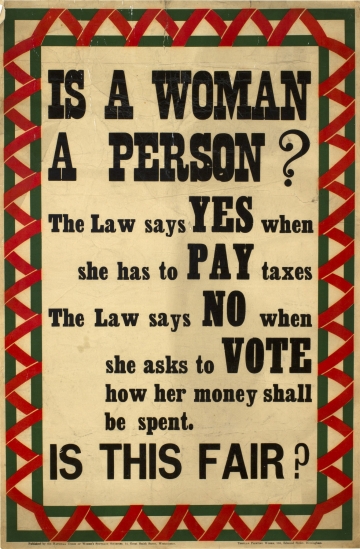What were the suffrage campaigners fighting for?

This enquiry explores the varying reasons why suffrage campaigners wanted to achieve votes for women from the mid-nineteenth century onwards. The lessons are designed for use with Key Stage 3 students and may be adapted for use with Key Stage 4.
Key learning points
- What the different groups campaigning for women’s suffrage were actually fighting for
- The difference between ‘adult suffrage’ and ‘women’s suffrage’
- How women made their voices heard: the co-operative movement, TUC and ILP
- The suffragist–suffragette split and increasing suffragette militancy
- Engaging with the suffrage database and applying learning to ‘big data’ case studies
- The terms of the 1918 and 1928 Acts and responses from campaigners
Scholarly rationale
This enquiry draws on recent scholarship by exploring the role played by many of the suffragists in radical politics, as well as the suffragettes. It includes insights from recent literature that has built on previous studies of the middle-class leaders of the militant and non-militant campaigns to include figures whose views and actions have not been explored in as much detail, especially working-class women. It also draws upon work that has situated the suffrage movement in a context of wider campaigns to improve the position of women in the 19th century and in late 19th- and early 20th-century labour politics.
Curricular rationale
It explores similarities and differences between and within the various groups campaigning for women’s suffrage. Its aim is to introduce the diversity of the movement and build substantive knowledge of key individuals, events and ideas associated with it, and also to give students a sense of the wider ideological and political context from the late 19th and early 20th century. This enquiry should also address misconceptions such as the idea that the suffragettes were intrinsically more radical than the suffragists and that all the participants in the campaign for votes for women were of a similar social class.
If you are downloading this unit to use with your students, why not think about taking part in the evaluation project which aims to examine the impact of this website and resources upon student knowledge and democratic engagement? Participation involves the administering of a student quiz both before and after the learning sequence. You can find details here.
- HA Suffrage Enquiry 2 - Teacher Notes
133.5 KB PDF document - HA Suffrage Enquiry 2 - Resources
1.22 MB PDF document - HA Suffrage Enquiry 2 - Lesson 1 PowerPoint
3.49 MB Powerpoint presentation - HA Suffrage Enquiry 2 - Lesson 2 PowerPoint
3.58 MB Powerpoint presentation - HA Suffrage Enquiry 2 - Lesson 3 PowerPoint
2.91 MB Powerpoint presentation - HA Suffrage Enquiry 2 - Lesson 4 PowerPoint
5.2 MB Powerpoint presentation - HA Suffrage Enquiry 2 - Lesson 5 PowerPoint
4.08 MB Powerpoint presentation
